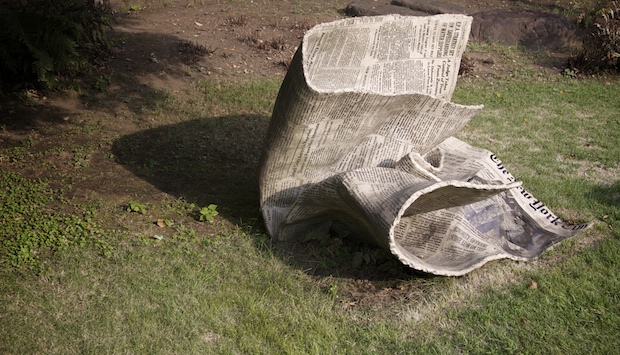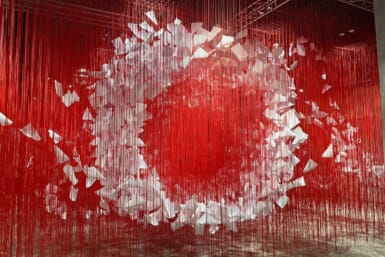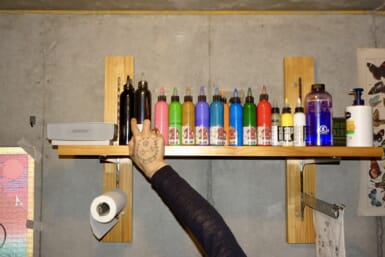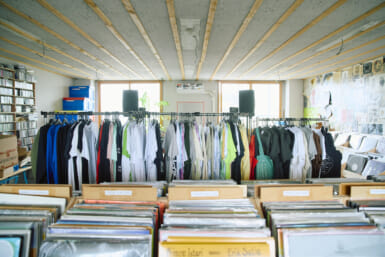I’d like to ask Kimiyo Mishima what she thinks of the iPad.
It may sound a strange thing to say, but bear with me. Most of the ceramic sculptor’s work over the last 40 years has been about waste. Mishima makes ceramic reproductions of things we throw away, for the most part, sticking to newspapers, magazines, comics and other printed matter, often wrinkled, dog-eared and worn. The sculptures can be remarkably realistic, needing almost to be touched before you can really believe that they are not made of cardboard or paper. But very often she makes them enormous — Brobdingnagian dailies, crumpled in a ball and discarded.
 On Naoshima island, there are very few public wastebaskets. And the one you might run across on a quiet country road is a little too large to be of any use.
On Naoshima island, there are very few public wastebaskets. And the one you might run across on a quiet country road is a little too large to be of any use.
The size of these objects arrests the attention. You are forced to consider the careful creases and folds, and the fact that they have been deliberately crafted. Most people would ignore a bit of trash on the grass, or frown at it. We find them dirty. They are crushed in a single, thoughtless act and tossed away to be forgotten. And yet in Mishima’s hands, they are re-made into careful duplicates that will never rot, age or be thrown away.
The Hara Museum has a Mishima sculpture that I often come back to. It is a crumpled newspaper, seeming to have come to rest beneath a tree in the museum courtyard. It is weathered now, and sometimes looks more like some lost undersea organism. A giant sponge or coral. But as an issue of the New York Times from 1984, it’s in remarkably good shape.
In Judith S. Schwartz’s book, Confrontational Ceramics, Mishima writes, “…the daily newspapers we’ve finished reading pile up before our eyes. In that pile of newspapers, I see an accumulation of time from passing days. Whether or not we read and process the information, in the the end it’s all garbage. Such disposable information is such an indispensable characteristic of our modern age.”
But is it? When I read this passage by her, I can’t help but think that even now it’s starting to sound a little quaint. The “pile of newspapers” is, for better or worse, becoming something of an anachronism. Yet the disposability of information is more apparent than ever. There is no physical marking of time for digital information. Blogs and news articles can be updated and altered. Sure, the Internet never forgets; but information has become strangely timeless, and entirely spaceless. Data is invisible — downloaded, read, and deleted. So can it be considered disposable, or is it something else?
So again, I wonder what Mishima makes of the iPad — if, of course, she thinks of it at all. The artist is now 77 years old, but still working. And perhaps there are stacks of ceramic smart phones and tablet computers in her future. Or perhaps not. Mishima seems to be following a wider path, dealing with waste in general. And there is certainly no shortage of that.
But with the kind of “informational waste” Mishima was once so taken by becoming increasingly ephemeral, her text-based works run the danger of looking nostalgic. And I wonder if she regards that as a good thing.
-Owen Schaefer
Twitter
Art Prints









